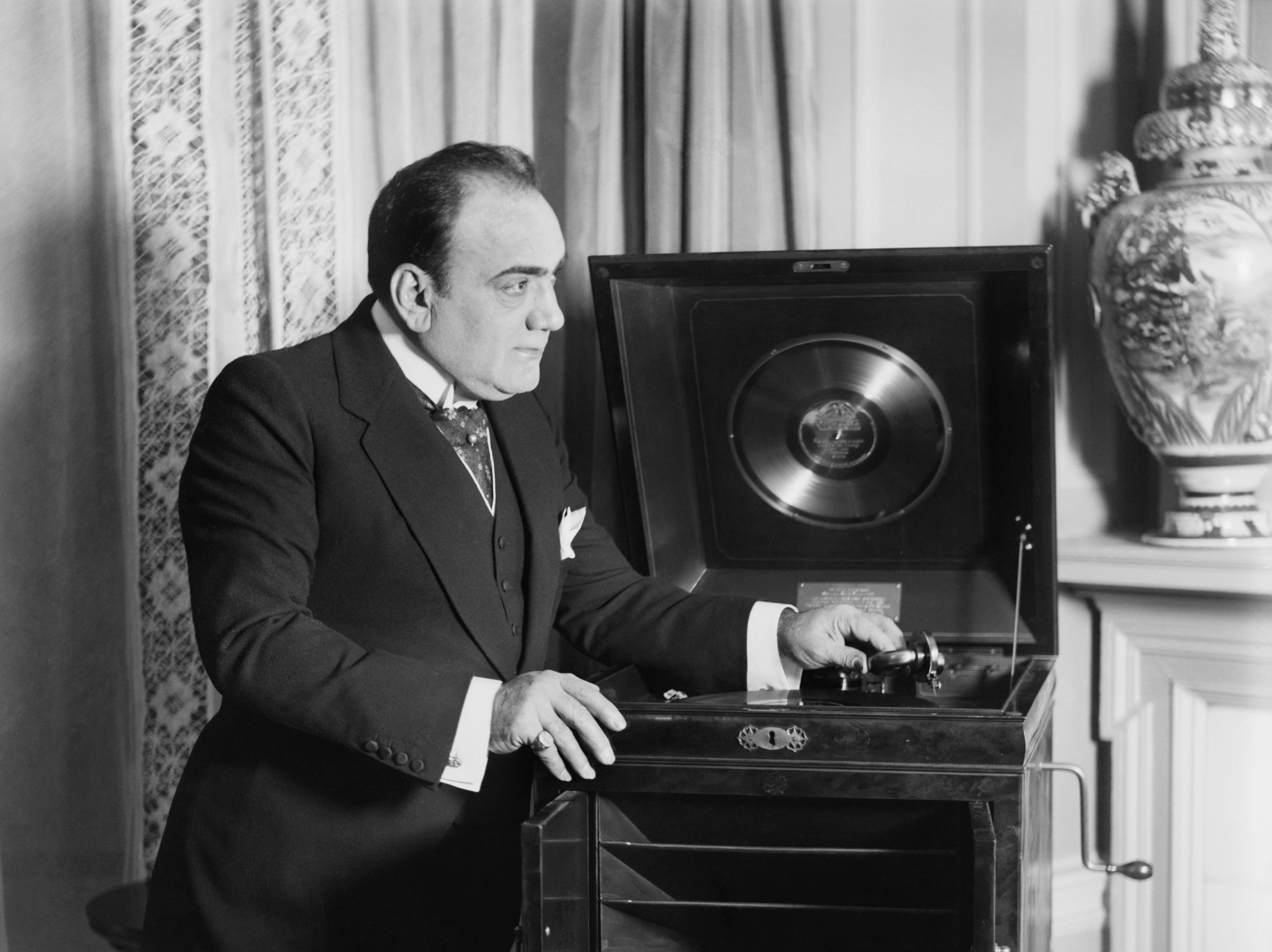One hundred years ago, at the age of forty-eight, the tenor par excellence died in Naples: Enrico Caruso.
He was born on February 27, 1873, in a large family and he enjoyed singing from childhood. Thanks to the Rev. Giuseppe Bronzetti, pastor of the Church of Sant’Anna delle Paludi, he made his first vocal appearances in sacred music. This was first as an alto in the parish choir, then as a soloist in the Mass by Saverio Mercadante (1795-1870) and in the farce I briganti nel giardino di Don Raffaele by Alessandro Fasanaro.
He himself recounts his beginnings in a letter dated June 10, 1906: “I began singing at the age of ten…in church. We delighted all of the faithful, at least I think so, because I never had any sign of disapproval from them. Furthermore, with what I earned as a liturgical singer, I supported two families, who pushed me to go on” (G. Cesarini e P. Gargano, Caruso. Vita e arte di un grande cantante, Longanesi 1990, p. 29).
After his debut, in November 1894 at the Teatro Nuovo in Naples, he began to sing in the nearby theaters of Caserta and Salerno. From 1898 he sang in the main theaters of Italy and of the world, especially in the United States, where for seventeen years he was the star of the Metropolitan Opera in New York City. His repertoire was vast: Donizetti, Bellini, Verdi, the verismo composers, Puccini, art songs and Neapolitan songs.
On December 30, 1901, he was harshly criticized for his performance in L’elisir d’amore at the Teatro San Carlo in Naples. After this blow he decided never again to sing in his hometown. Following a nodular laryngitis operation in the summer of 1909, his voice became even more burnished, sounding almost baritone.
Enrico Caruso was the first major recording star. He started making records in Milan in 1902 and continued until September, 1920. In 1907, with the aria Vesti la giubba from the opera Pagliacci by Ruggero Leoncavallo, he sold one million copies. Core ‘ngrato, the song inspired by his intense but tormented relationship with the Florentine soprano Ada Giachetti (1874-1946), was recorded by the singer in 1911 and received immediate success and acclaim.
His discography also contains sixteen religious compositions, recorded in New York City with the Victor Orchestra Record between January 7, 1912, and September 16, 1920: a singular and little-known heritage, which always fascinates and excites the listener. They are: Crucifix by Jean-Baptiste Faure (1830-1914); Hosanna by Jules-Armand Granier (1852-1906); Agnus Dei by Georges Bizet (1838-1875); Ave Maria by Percy B. Kahn (1880-1966), written specifically for Caruso; Cuius animam from Stabat Mater by Gioachino Rossini (1772-1868); Les Rameaux by Jean-Baptiste Faure; Ingemisco from Requiem by Giuseppe Verdi (1813-1901); La Procession by César Franck (1822-1890); O souverain from the opera Le Cid by Jules Massenet (1842-1912); Cantique de Noël by Adolphe-Charles Adam (1803-1856); Vois ma misère, hélas! From the opera Samson et Dalila by Camille Saint-Saëns (1835-1921); Pietà, Signore attributed to Alessandro Stradella (1639-1682) but more likely by François-Joseph Fétis (1784-1871); Campane a sera by Vincenzo Billi (1869-1938), based on a text by Caruso himself; Domine Deus and Crucifixus from Rossini’s Petite Messe Solennelle.
On December 24, 1920, the tenor had to bid farewell to the stage and, shortly thereafter, to the world, singing at the Metropolitan Opera La juive, an opera in five acts by Fromental Halévy (1799-1862). He was mistakenly diagnosed with purulent pleurisy, which degenerated after a few surgeries. On June 9, 1921, following slow improvements, he returned to Italy and stayed at the Vittoria Hotel in Sorrento, where on July 28 two specialists advised him to go to Rome for an immediate surgery. But on August 1 he stopped in Naples, at the Hotel Vesuvio, where Professor Giuseppe Moscati joined him. Dr. Moscati was the only one, finally, to diagnose precisely the disease that afflicted the tenor for some time: “an uncommon form of left subphrenic abscess.”
Unfortunately, after this diagnosis, it was clear that the patient was doomed and no longer needed the services of Dr. Moscati. Rather, he needed the graces from the “holy physician.” The Jesuit Giovanni Aromatisi said in this regard: “Called to the bed of the famous tenor Enrico Caruso, he reminded him that he had consulted all the doctors, but had not consulted Jesus Christ. Caruso replied: ‘Professor, do what you want’… The confessor was called and the sacraments were administered to him” (S. Congregatio pro Causis Sanctorum, Neapolitana beatificationis et canonizations Servi Dei Iosephi Moscati viri laici. Positio super virtutibus, Rome 1972, p. 286). Assisted to the last by Moscati, Enrico Caruso passed away on the morning of August 2, 1921, trusting in God.
Photo credit: pixabay.com


